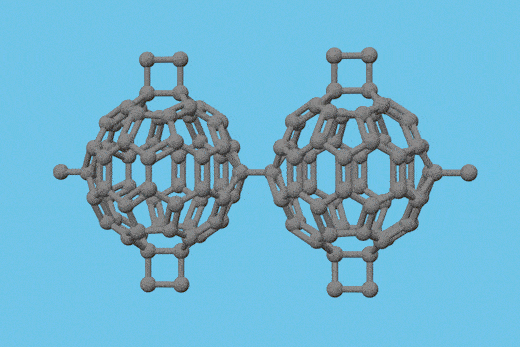
Victoria Atkinson
Following on from two generations of chemists, perhaps my choice to pursue the same path was inevitable. My childhood was full of home experiments, from the classic bicarb volcano to growing copper sulphate crystals on the window ledge!
I studied chemistry at the University of Oxford and completed my fourth-year master’s project working on catalytic methodology with Darren Dixon (which excitingly led to my first publication). Having caught the research bug, I decided tocontinue onto do a PhD, this time joining Jeremy Robertson to work on a total synthesis project, employing enzymatic methodology to produce agrochemical products.
年底我的博士,我发现我是enjoying talking about science much more thanactually doingit and I became heavily involved in science outreach. Here I could share my enthusiasm for science with younger students through practical workshops and school visits, something which I always found very fulfilling. Later, I focused on developing new outreach material and have since made the transition to science journalism.
 Business
BusinessUK antibiotics supply chain stretched by surge in Strep A infections
Government enacts protocols to enable substitute treatments and recommends preventive prescriptions in severe cases

 Feature
FeatureFashion to dye for
Can colouring clothing be environmentally sustainable? Victoria Atkinson looks at how dyes have come full circle from their natural origins
 Research
ResearchWater-splitting device solves puzzle of producing hydrogen direct from seawater
System offers scalable way to turn oceans into energy source
 Research
ResearchNew lease of life for waste PVC chlorinating aromatics
Electrochemical process could tackle hard to recycle plastic
 Business
BusinessEurope gears up for streamlined patent system
Delayed Unified Patent Court set to begin operating in April
 Research
ResearchControversy surrounds corrected chemical structures
Researchers used machine learning-powered NMR prediction to correct improbable structures – but some of their revisions have been challenged
 Research
ResearchDiverse pharmaceutical building blocks prepared with evolved enzymes
Computation guides enzyme evolution to produce high-value drug compounds
 Research
ResearchWaste plastics unzipped into useful pieces
Chemical recycling of polyethylene produces feedstock usually obtained from crude oil.
 Research
ResearchDesigner catalyst with enzyme-like cavity splits water almost as fast as plants
Catalytic cleft offers new strategy to speed up hydrogen synthesis
 Research
ResearchSurface reactions can be controlled by bulk stoichiometry
Computational models demonstrate how the elastic properties of a solid can influence surface chemistry
 Research
ResearchArtificial active transport offers new way to prepare complex oligorotaxanes
Novel class of molecular pump is driven by transamidation
 Opinion
OpinionAngela Russell: ‘We have to not be afraid of failing’
The medicinal chemist on thinking like a scientist and knowing where you want to go
 Research
ResearchArtificially evolved enzyme tackles tricky cross coupling
Directed evolution on the metalloenzyme cytochrome P450 creates a catalyst for making macrocyclic antibiotics
 Research
ResearchCombining expertise to develop remote-controlled nanomaterials
Beatriz Pelaz explains how her research tackles bionanomaterials from multiple angles
 Opinion
OpinionRobert Mokaya: ‘I have been lucky to open a lot of doors’
The innovative materials chemist on a love of making things and opening doors for others
 Research
ResearchRecord-breaking rotaxane prepared on polymer bead
Polystyrene beads decorated with 1014rotaxane molecules
 Research
ResearchGraphene-like structure created from a fullerene
2D material synthesised from nanocluster fullerene for the first time
 Research
ResearchMolecular machine drills holes in antibiotic-resistant bacteria killing them
Bacteria aren’t able to develop resistance against nanomotor’s deadly action
 Research
ResearchPolymer membrane could tap huge reserves of ‘blue energy’ from estuaries’ salt gradients
Solution to performance stalemate means tidal rivers’ vast electrochemical power could be harnessed























